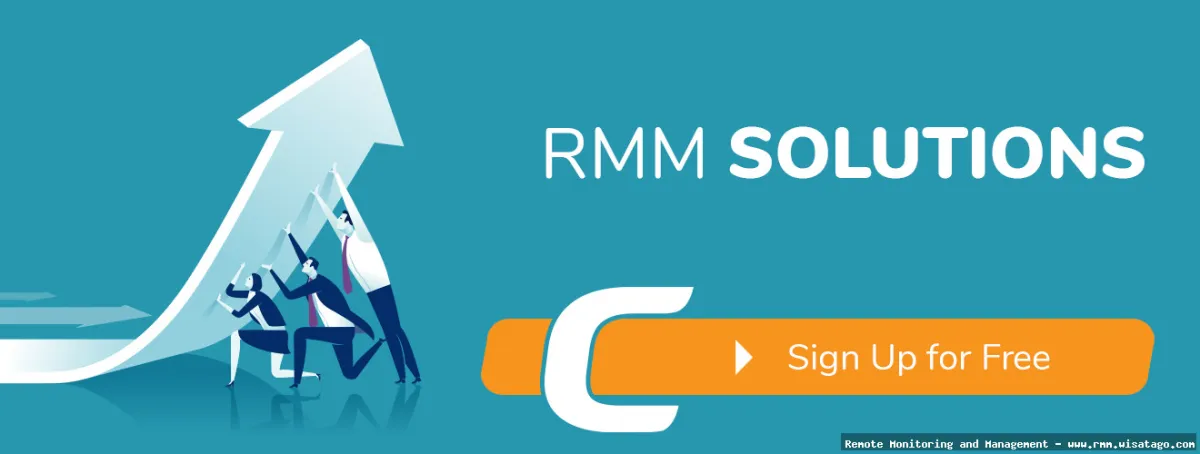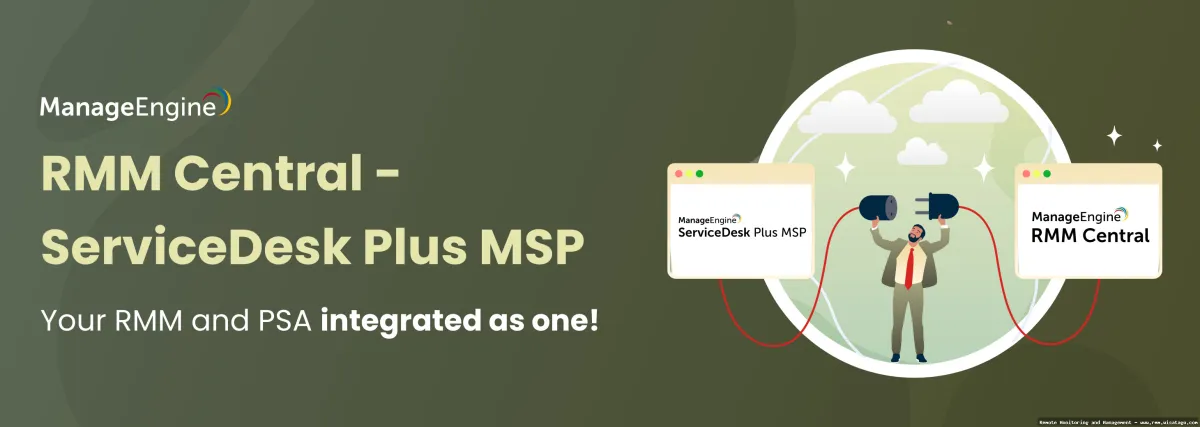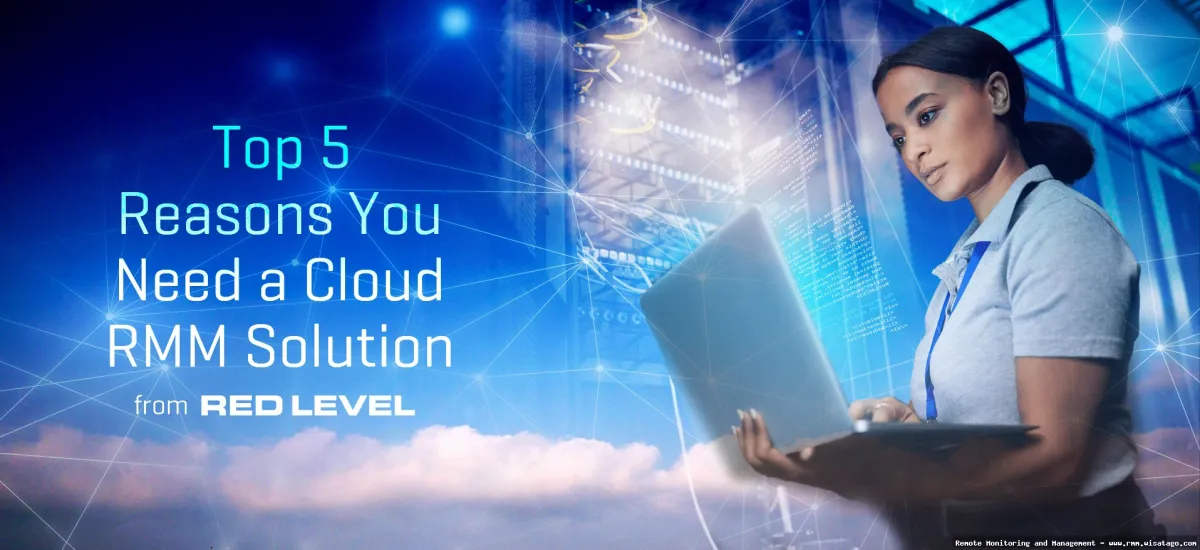Navigating the complexities of a multi-cloud environment can feel like trying to herd cats. You’ve got workloads spread across different providers – AWS, Azure, Google Cloud, maybe even some on-premises infrastructure still kicking around. Each cloud has its own quirks, its own management tools, and its own way of doing things. Keeping tabs on everything – performance, security, compliance – can quickly become a nightmare. That’s where Remote Monitoring and Management (RMM) solutions come into play, acting as your central command center for all things IT.
Think of RMM as your digital Swiss Army knife. It’s a platform designed to remotely monitor and manage your IT assets, regardless of where they reside. This includes servers, desktops, laptops, mobile devices, and increasingly, cloud infrastructure. RMM solutions provide a unified view of your entire IT estate, allowing you to proactively identify and resolve issues before they impact your business. They automate routine tasks, streamline IT operations, and enhance security, ultimately freeing up your IT team to focus on more strategic initiatives.

In this article, we’ll dive deep into the world of RMM solutions for multi-cloud environment management. We’ll explore the key features and capabilities you should look for, discuss the benefits of using RMM in a multi-cloud setting, and address the challenges you might encounter during implementation. Whether you’re already using RMM or just starting to explore the possibilities, this guide will provide you with the insights you need to make informed decisions and optimize your multi-cloud management strategy.
What is RMM and Why is it Crucial for Multi-Cloud?
Remote Monitoring and Management (RMM) is a software suite used by IT service providers (MSPs) and internal IT departments to remotely monitor and manage client endpoints, networks, and computer systems. It’s designed to automate routine tasks, detect and resolve issues proactively, and ensure the overall health and security of IT infrastructure.
Core Functions of RMM
At its core, an RMM solution provides several key functions:. Effective IT management often requires a centralized approach, and RMM offers that capability by enabling remote monitoring and maintenance of systems
.
- Remote Monitoring: Continuously monitors systems for performance metrics, errors, and other potential issues.
- Remote Access: Allows IT technicians to remotely access and control devices for troubleshooting and maintenance.
- Patch Management: Automates the process of patching software vulnerabilities across all managed devices.
- Automation: Enables the automation of routine tasks, such as software deployments, script execution, and system maintenance.
- Alerting: Generates alerts when predefined thresholds are breached or when specific events occur.
- Reporting: Provides comprehensive reports on system performance, security status, and other key metrics.
The Multi-Cloud Challenge
The multi-cloud environment adds layers of complexity to IT management. Each cloud provider has its own set of tools and interfaces, making it difficult to gain a unified view of your infrastructure. Without a centralized management platform, you’re likely to face challenges like:
- Visibility Issues: Difficulty in monitoring the health and performance of resources across different clouds.
- Security Risks: Increased attack surface due to inconsistent security policies and configurations.
- Compliance Challenges: Difficulty in maintaining compliance with industry regulations across different cloud environments.
- Operational Inefficiency: Redundant tasks and manual processes leading to wasted time and resources.
RMM as the Solution for Multi-Cloud Chaos
RMM solutions address these challenges by providing a centralized platform for managing your entire multi-cloud environment. They integrate with various cloud providers, offering a single pane of glass view of your infrastructure. This enables you to:
- Gain Complete Visibility: Monitor the health and performance of all your cloud resources from a single dashboard.
- Enhance Security: Enforce consistent security policies across all cloud environments.
- Simplify Compliance: Streamline compliance efforts by centralizing audit trails and reporting.
- Improve Efficiency: Automate routine tasks and streamline IT operations.
Key Features to Look for in a Multi-Cloud RMM Solution
Not all RMM solutions are created equal. When choosing an RMM for your multi-cloud environment, it’s crucial to look for specific features that address the unique challenges of managing distributed infrastructure.
Cloud Provider Integration
The RMM solution should seamlessly integrate with the cloud providers you’re using, such as AWS, Azure, and Google Cloud. This integration should allow you to:

- Discover cloud resources: Automatically identify and inventory all your cloud resources.
- Monitor cloud services: Track the performance and availability of key cloud services, such as compute instances, databases, and storage.
- Manage cloud configurations: Enforce consistent configurations and security policies across your cloud environments.
Automated Patch Management
Patch management is critical for maintaining the security of your systems. The RMM solution should automate the process of patching software vulnerabilities across all your cloud resources, including:
- Automated patch scanning: Regularly scan systems for missing patches.
- Automated patch deployment: Automatically deploy patches to vulnerable systems.
- Patch compliance reporting: Generate reports on patch compliance status.
Advanced Monitoring and Alerting
The RMM solution should provide advanced monitoring capabilities that allow you to detect and resolve issues proactively. This includes:
- Real-time monitoring: Monitor system performance and resource utilization in real-time.
- Customizable alerts: Configure alerts based on specific thresholds and events.
- Automated remediation: Automatically trigger actions to resolve issues when alerts are triggered.
Security Information and Event Management (SIEM) Integration
Integrating your RMM solution with a SIEM system can significantly enhance your security posture. This integration allows you to:
- Centralize security logs: Collect and analyze security logs from all your cloud resources.
- Detect security threats: Identify and respond to security threats in real-time.
- Improve incident response: Streamline incident response by providing a centralized view of security events.
Reporting and Analytics
The RMM solution should provide comprehensive reporting and analytics capabilities that allow you to track key metrics and identify trends. This includes:
- Performance reporting: Track system performance and resource utilization over time.
- Security reporting: Monitor security events and identify potential vulnerabilities.
- Compliance reporting: Generate reports on compliance status.
Benefits of Using RMM in a Multi-Cloud Environment
Implementing an RMM solution in your multi-cloud environment offers a wide range of benefits, including:
Improved Visibility and Control
RMM provides a single pane of glass view of your entire IT infrastructure, regardless of where it resides. This allows you to:
- Easily monitor the health and performance of all your resources.
- Quickly identify and resolve issues before they impact your business.
- Gain a better understanding of your IT environment.
Enhanced Security
RMM helps you improve your security posture by:

- Enforcing consistent security policies across all your cloud environments.
- Automating patch management to address software vulnerabilities.
- Integrating with SIEM systems to detect and respond to security threats.
Streamlined IT Operations
RMM automates routine tasks and streamlines IT operations, freeing up your IT team to focus on more strategic initiatives. This includes:
- Automated software deployments.
- Automated script execution.
- Automated system maintenance.
Reduced Costs
By improving efficiency and reducing downtime, RMM can help you reduce your overall IT costs. This includes:
- Reduced labor costs due to automation.
- Reduced downtime due to proactive issue resolution.
- Improved resource utilization.
Simplified Compliance
RMM helps you simplify compliance efforts by:
- Centralizing audit trails and reporting.
- Enforcing consistent security policies.
- Automating compliance tasks.
Challenges of Implementing RMM in a Multi-Cloud Environment
While RMM offers numerous benefits, implementing it in a multi-cloud environment can also present some challenges.
Complexity
Integrating an RMM solution with multiple cloud providers can be complex, requiring specialized knowledge and expertise. You need to ensure that the RMM solution is compatible with all your cloud environments and that it can effectively monitor and manage your resources.
Security Considerations
When implementing an RMM solution, it’s crucial to consider security implications. You need to ensure that the RMM platform itself is secure and that it doesn’t introduce any new vulnerabilities into your environment. This includes:
- Secure access controls: Restrict access to the RMM platform to authorized personnel.
- Data encryption: Encrypt all sensitive data stored and transmitted by the RMM platform.
- Regular security audits: Conduct regular security audits to identify and address potential vulnerabilities.
Integration Challenges
Integrating the RMM solution with other IT systems, such as ticketing systems and CRM platforms, can be challenging. You need to ensure that the RMM solution can seamlessly integrate with your existing workflows and processes.

Cost
RMM solutions can be expensive, especially for large and complex multi-cloud environments. You need to carefully evaluate the costs and benefits of different RMM solutions before making a decision.
Training and Support
Your IT team will need to be trained on how to use the RMM solution effectively. You also need to ensure that the RMM vendor provides adequate support to address any issues that may arise.
Best Practices for RMM Implementation in Multi-Cloud
To ensure a successful RMM implementation in your multi-cloud environment, follow these best practices:
Plan Carefully
Before implementing an RMM solution, take the time to carefully plan your strategy. This includes:
- Defining your goals and objectives.
- Identifying your requirements.
- Evaluating different RMM solutions.
- Developing a detailed implementation plan.
Start Small
Don’t try to implement all the features of the RMM solution at once. Start with a pilot project and gradually roll out the solution to other parts of your environment.
Automate Everything
Take advantage of the automation capabilities of the RMM solution to automate routine tasks and streamline IT operations. This will free up your IT team to focus on more strategic initiatives.
Monitor and Optimize
Continuously monitor the performance of the RMM solution and optimize its configuration to ensure that it’s meeting your needs. Regularly review your RMM strategy and make adjustments as needed.

Prioritize Security
Make security a top priority when implementing an RMM solution. Implement strong security controls and regularly audit your RMM environment to identify and address potential vulnerabilities.
In conclusion, RMM solutions are essential for effectively managing multi-cloud environments. By choosing the right RMM solution and following best practices, you can improve visibility, enhance security, streamline IT operations, and reduce costs.
Conclusion
In conclusion, effectively managing a multi-cloud environment demands robust and adaptable RMM solutions. As we’ve explored, the complexities inherent in orchestrating disparate cloud services, ensuring consistent security protocols, and maintaining optimal performance necessitate a unified and centralized approach. The right RMM solution can bridge the gaps between different cloud providers, offering visibility, automation, and control that are crucial for success in today’s dynamic IT landscape. Ignoring these needs can lead to increased costs, security vulnerabilities, and operational inefficiencies, ultimately hindering an organization’s ability to leverage the full potential of its multi-cloud investment.
The journey to multi-cloud mastery begins with recognizing the inherent challenges and proactively seeking solutions that address them. By prioritizing features like automated patching, proactive monitoring, and centralized policy management, organizations can transform their multi-cloud environments from potential liabilities into strategic assets. We encourage you to carefully evaluate your current infrastructure and explore the diverse range of RMM solutions available. To learn more about how a modern RMM solution can streamline your multi-cloud management, we invite you to visit our website and request a demo today.
Frequently Asked Questions (FAQ) about RMM Solutions for Multi-Cloud Environment Management
What are the key benefits of using an RMM solution to manage a complex multi-cloud environment, and how does it differ from native cloud management tools?
Using an RMM (Remote Monitoring and Management) solution for a multi-cloud environment offers several advantages over relying solely on native cloud management tools. Firstly, RMM solutions provide a centralized dashboard for monitoring and managing resources across different cloud providers (AWS, Azure, Google Cloud, etc.). This simplifies IT management and reduces the complexity of switching between multiple cloud consoles. Secondly, RMMs offer standardized automation capabilities for tasks like patching, software deployment, and security policy enforcement, ensuring consistency across all cloud environments. This is critical for maintaining compliance and reducing security risks. While native tools offer deep integration with their respective platforms, they lack the holistic, cross-platform view that RMMs provide, making them less suitable for truly heterogeneous multi-cloud deployments. Finally, many RMM solutions include robust reporting and analytics features, giving a comprehensive overview of resource utilization, performance trends, and potential issues across the entire multi-cloud infrastructure.
How can an RMM solution help improve security posture and compliance across a diverse multi-cloud infrastructure, considering different cloud provider security models?
An RMM solution significantly enhances security and compliance in multi-cloud environments by offering centralized security management and automation. It enables IT teams to enforce consistent security policies, such as password complexity rules, access controls, and endpoint protection configurations, across all cloud platforms, regardless of the underlying cloud provider’s security model. RMMs can automate vulnerability scanning and patching, ensuring that systems are up-to-date with the latest security updates, mitigating the risk of exploits. Moreover, they provide real-time monitoring and alerting for security events, enabling rapid incident response and containment. Compliance is also streamlined with RMMs through automated audit trails, reporting on compliance status against industry standards (e.g., HIPAA, PCI DSS), and automated remediation of non-compliant configurations. By standardizing security practices and providing visibility into security posture across all cloud environments, RMMs minimize the risk of security breaches and compliance violations.
What specific features should I look for in an RMM solution to effectively manage and optimize costs in a multi-cloud environment, particularly regarding resource allocation and usage?
When selecting an RMM solution for multi-cloud cost optimization, several key features are crucial. Firstly, look for real-time resource monitoring and analytics across all cloud environments. This allows you to identify underutilized or over-provisioned resources. Secondly, the RMM should offer automated resource scaling capabilities, enabling you to dynamically adjust resource allocation based on demand, reducing unnecessary spending. Cost reporting and analysis are vital; the RMM should provide detailed reports on cloud spending by resource, department, or project, allowing you to identify cost drivers and optimize resource allocation. Integration with cloud provider billing APIs is also important for accurate cost tracking. Furthermore, features like automated shutdown of idle resources and right-sizing recommendations can significantly reduce cloud costs. Finally, consider RMMs that offer cost optimization policies and alerts, notifying you of potential cost overruns or inefficiencies in your multi-cloud environment.